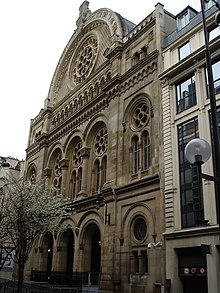Rue de la Victoire
You can help expand this article with text translated from the corresponding article in French. Click [show] for important translation instructions.
- Machine translation, like DeepL or Google Translate, is a useful starting point for translations, but translators must revise errors as necessary and confirm that the translation is accurate, rather than simply copy-pasting machine-translated text into the English Wikipedia.
- Consider adding a topic to this template: there are already 6,211 articles in the main category, and specifying
|topic=will aid in categorization. - Do not translate text that appears unreliable or low-quality. If possible, verify the text with references provided in the foreign-language article.
- You must provide copyright attribution in the edit summary accompanying your translation by providing an interlanguage link to the source of your translation. A model attribution edit summary is
Content in this edit is translated from the existing French Wikipedia article at [[:fr:Rue de la Victoire (Paris)]]; see its history for attribution. - You may also add the template
{{Translated|fr|Rue de la Victoire (Paris)}}to the talk page. - For more guidance, see Wikipedia:Translation.
The rue de la Victoire is a street in the 9th arrondissement of Paris.
The former name of the street was "rue Chantereine", which means "singing frogs", after the many frogs in the area as the quarter was swampy. The street took the name "rue de la Victoire" in 1797 after the success of Napoleon's campaign in Italy. In 1816, during the Bourbon Restoration, the street changed its name, but the name was restored in 1833.
| Located near the Métro stations: Trinité - d'Estienne d'Orves, Le Peletier and Notre-Dame-de-Lorette. |
Notable places

- Paris' Grande Synagogue is at Number 44.
- The former hôtel Beauharnais, from which Napoleon organized the coup of the 18 Brumaire lies on the street.
- The Hotel Thellusson lay between the Rue de Provence and the Rue de la Victoire until its destruction in 1826.
- At the junction with the Rue Joubert there is a townhouse designed by the architect François-Joseph Bélanger. After his release from the Saint Lazare Prison, he rebuilt the property in a Neoclassical style.
References
- Histoire de Paris rue par rue, maison par maison, Charles Lefeuve, 1875














